by Naomi L. | January 22, 2014 | Blog, Creative Writing, Off The Bookshelf |
I wanted to start this year’s Off The Bookshelf posts with a review of a beautiful story that I finally got around to reading recently. I know I really should have read it (or rather, finished reading it) a long time ago, and after I did, I realized what I had been missing since I was a kid. So long overdue, here is a review of a classic tale by a French aviator and author: The Little Prince, by Antoine de Saint-Exupéry.
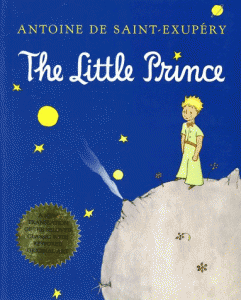
The Little Prince, by Antoine de Saint-Exupéry
Summary
The Little Prince (or Le Petit Prince, in its original French title) was first published in 1943 by Reynal & Hitchcock, in both English and French. Narrated in the first person, the book tells the story of a pilot who ends up stranded in the desert, where he meets a strange boy from a distant and tiny “planet” (which is really an asteroid). Over the eight days it takes him to fix his plane, the narrator gets to know the story of this “Little Prince”, from the life he had on his planet to the journey that brought him to Earth. The Little Prince enchants the pilot with his eccentric and poetic outlook on the world, and when the time comes for both of them to return home, the narrator is utterly heartbroken to lose the only friend he’s ever known who could appreciate life with the beautiful innocence of a child.
Review
What stands out most about this book is how it criticizes the “adult” way of thinking. The story begins with the narrator telling his readers how he was discouraged from pursuing art by grown-ups who couldn’t comprehend his drawings when he was younger. Since that time, the Little Prince was the first person he ever met who understood the vision he had as a child. Still very young himself, the Prince thus represents the simple way children see the world in contrast to the analytical views of adults, and does so in a way that makes the former much more appealing.
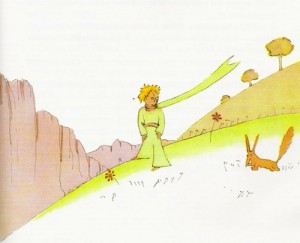
The Little Prince and the Fox
(Illustration by Antoine de Saint-Exupéry)
Though appearing to be a children’s book, The Little Prince is arguably targeted at adults who have forgotten how to understand the world the way they should. We as mature readers have it constantly pointed out to us that our manners are flawed, that we are too concerned with “matters of consequence”. Basically, we’ve become so focused on trivial details that we’ve lost sight of the things that are truly important. Perhaps this idea is most evident in a scene involving another well-spoken character of the story: a fox that the prince meets on his journey through Earth.
One sees clearly only with the heart. What is essential is invisible to the eye.
– The Fox, The Little Prince (Antoine de Saint-Exupéry, 1943)
The Little Prince is a charming tale fit for readers of all ages. For adults, it’s a reminder of the lessons that can be learned from youth, many of which may have been lost long ago. As for children, they can find embedded in these pages the encouragement to keep living their own special way, and, if nothing else, a friend who can teach them the real matters of so much importance.
Inspiration
If there’s one thing I loved most about this book, it was the way it constantly reminded me how I used to see the world when I was a little girl (and how I probably should see it again as a woman). Living in a world that seems to demand we grow up as quickly as possible, it’s easy to forget what it’s like to experience life through the innocent eyes of children. The Little Prince’s questions and observations, coupled with the grown-ups’ awkward answers, served as a lesson on how I should never lose touch with the curious child still in my heart, for to do so would be like losing a very special friend.
Overall, I enjoyed this book very much. Though it did break my heart a little, it was wonderful to read a story that could effortlessly shine light on the poetry children can bring to the world. The Little Prince has a lovely perspective on life, and after reading his story, I only hope I can remember to keep setting my inner child free. She is, after all, a very important friend to the grown-up writer I’ve become.
by Naomi L. | January 8, 2014 | Blog, Creative Writing |
Recently, I was tagged over on Rachel Rose Teferet’s blog, in a post about the top ten books that have been influential to her as a writer. To keep the chain moving forward, I’m now sharing my own Top Ten list. So in no particular order, here are the books that have helped me evolve as a writer (and as a person). Note that I had to omit some excellent titles, but there were so many choices that it was hard to come up with just ten. Also, I’m counting series as one item each! Enjoy!
 1) The Bible
1) The Bible
OK, maybe I borrowed an idea from Rachel for how to start my list. Or maybe I just couldn’t lead with any other book. You decide. Either way, the Bible has been an important resource to me, mostly for its abundance of lessons that have helped me and my family through some trying times in our lives. Though I don’t like to think of myself as a religious person (if anything, I prefer the term “spiritual”), the Bible is a special book that will always hold a place on my shelf.
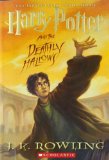 2) Harry Potter, by J.K. Rowling
2) Harry Potter, by J.K. Rowling
This is probably the most important book series of my childhood. Being part of the “Potter generation”, I had the privilege of growing up with this wonderful story, reading each new novel shortly after it was released. With its excellent narration, detailed plot and intriguing characters, the Harry Potter books taught me almost everything I know about storytelling, and I’ll always treasure them as the books that kept me hooked on fantasy for life.
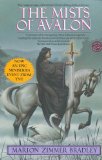 3) The Mists of Avalon, by Marion Zimmer Bradley
3) The Mists of Avalon, by Marion Zimmer Bradley
If Harry Potter was a big part of my childhood, The Mists of Avalon was a big part of my adolescence. This Arthurian fantasy saga introduced me to mature themes such as feminism and religious intolerance, and for that, it was a major step in my development as a writer of more advanced fiction.
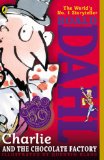 4) Charlie and the Chocolate Factory, by Roald Dahl
4) Charlie and the Chocolate Factory, by Roald Dahl
This was the book that first inspired me to become a writer. After reading Roald Dahl’s enchanting tale about young Charlie and his wild adventures through Wonka’s magical chocolate factory, I knew that creating fantasy stories of my own was something I wanted to do for the rest of my life.
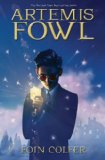 5) Artemis Fowl, by Eoin Colfer
5) Artemis Fowl, by Eoin Colfer
I started reading this series around the same time that I was reading Harry Potter, and I probably loved it just as much. Written by an Irish author, Artemis Fowl never failed to bring a humorous twist to the fantastic adventures about a boy genius and his interactions with the technologically advanced Fairy People. They were also the books that introduced me to “science fantasy”, a genre mixing elements of science fiction and fantasy. What could be better?
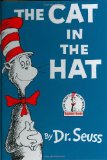 6) The Cat in the Hat, by Dr. Seuss
6) The Cat in the Hat, by Dr. Seuss
It may seem like an odd choice, but I added this children’s book to my list because it was one of the first books that I could ever remember reading by myself. By the time I started learning how to read, we had a huge collection of Dr. Seuss stories, and The Cat in the Hat was one that I always loved reading with my mother. Having been introduced to literature with Seuss’s fun rhymes and memorable characters, it’s no wonder I developed a love of books at such a young age!
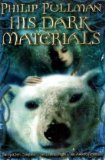 7) The Golden Compass, by Philip Pullman
7) The Golden Compass, by Philip Pullman
I admit, I didn’t start reading the His Dark Materials trilogy until after the movie came out, but I’m glad I did. Though the books are interesting enough for the author’s (often thinly veiled) metaphors criticizing religious organizations, I appreciated the story mostly for its fantasy elements, especially the creative idea of a parallel universe where human souls exist as tangible animal spirits. If anything, The Golden Compass and its sequels have taught me a lot about symbolism, which is one of my favorite parts about writing fiction.
 8) Romeo & Juliet, by William Shakespeare
8) Romeo & Juliet, by William Shakespeare
How could I possibly leave this story out? Most of my favorite romantic stories (as much to read as to write) are about forbidden love, and Romeo & Juliet is certainly the epitome of this plot type. This was the first Shakespearean play I ever read, and after growing accustomed to the style of writing, I quickly fell in love with his poetry. I think what I like most about this story is how it can be interpreted in so many different ways, and how a lot of its elements seem to be relevant even today. Why else would it still be so popular after 400 years?
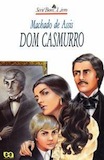 9) Dom Casmurro, by Machado de Assis
9) Dom Casmurro, by Machado de Assis
Why not throw a foreign language book into the mix? Though I had to read several books in Portuguese for school, this was one of the few that I actually liked. Written in the 19th century, Dom Casmurro is a realist story told from the perspective of a jealous man who suspects his wife of having been unfaithful. The main reason I find this book so interesting is because it’s an excellent example of the “unreliable narrator”, as it’s never made clear in the story whether his wife actually cheated on him or it was all just in his head. The author’s achievement of sparking heavy debates over the story to this day make this novel a classic of Brazilian literature.
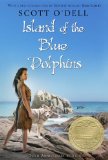 10) Island of the Blue Dolphins, by Scott O’Dell
10) Island of the Blue Dolphins, by Scott O’Dell
This book was recommended to me by my mother, who also read it when she was younger. I enjoyed reading about Karana’s adventures living alone on an island for years, and her story helped me see themes like social interaction and survivalism in a new light. Looking back, I realize this was one of the first examples I’d seen of a strong female protagonist, and I’ve since been inspired to create heroines who are equally independent and profound in character.
Now to move the chain forward, I’m tagging Vanessa Levin-Pompetzki and Inion N. Mathair. What are your top ten books?
by Naomi L. | December 18, 2013 | Blog, Creative Writing, Off The Bookshelf |
It’s the holiday season, and that means it’s the perfect time to share a blog post about a Christmas-themed story! I had originally planned this post for next week (Christmas Day), but when I realized Christmas is also the last Wednesday of the year, I decided to bump this review up and save next week for a special post instead. So here it is a week early, a review of another of my favorite Dr. Seuss books: How The Grinch Stole Christmas!
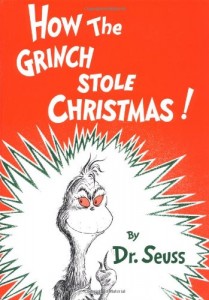
How The Grinch Stole Christmas!, by Dr. Seuss
Summary
Every Who down in Whoville liked Christmas a lot,
But the Grinch, who lived just north of Whoville, did NOT!
– How The Grinch Stole Christmas! (Dr. Seuss, 1957)
Originally published by Random House in 1957, How The Grinch Stole Christmas! tells the story of a grouchy creature known as the Grinch and his plot to ruin Christmas for the town of Whoville, located just south of his cave on Mount Crumpet. Annoyed every year by the festivities of the warm-hearted Whos, he dons a makeshift Santa Claus costume and descends into Whoville on Christmas Eve to steal all their presents, food and decorations, in the hope of stopping the holiday from ever arriving. Come Christmas morning, however, he is surprised to find that despite his best efforts to discourage them, the Whos still have the spirit of Christmas in them, and that day, the Grinch learns a valuable lesson about the true meaning of the holiday season.
Review
I’ve always appreciated How The Grinch Stole Christmas! for its uplifting message about the holiday spirit. With all the commercialization that Christmas has undergone over time, it’s easy to lose sight of the simpler things we should enjoy during the holidays, such as the company of our loved ones and all the possibilities that come with a new year. Puzzled to hear the Whos singing on Christmas morning, the Grinch starts to wonder why his plan didn’t work, and comes to a heartwarming revelation.
Maybe Christmas, he thought, doesn’t come from a store.
Maybe Christmas, perhaps, means a little bit more.
It probably goes without saying that the author’s intention with this story was to criticize the commercialization of Christmas. Interestingly, the Grinch has been compared to Seuss himself, who claimed to have found inspiration for the character after seeing a “Grinchy” face in the mirror on December 26th. His idea was to write this sour character in order to rediscover the meaning of Christmas, which he felt had been lost on him at some point in the past. The same way he did with Horton Hears a Who!, Dr. Seuss drew from his own life experience to tell a heartwarming story that readers of all ages can enjoy for its important lesson.
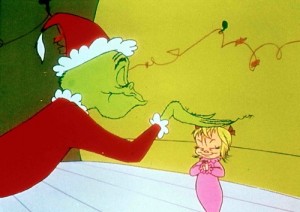
The Grinch and Cindy Lou Who, How The Grinch Stole Christmas! (1966)
Like most of Dr. Seuss’s children’s books, How The Grinch Stole Christmas! is written in rhyming verse and illustrated with colorful and bizarre characters, making it a fun and memorable read for the whole family. A noteworthy adaptation of the book is the 1966 TV special directed by Chuck Jones (of Looney Tunes fame). I remember watching it often as a kid and smiling every time the Grinch’s heart grew three sizes at the end of the story (not to mention Cindy Lou Who was probably the sweetest little thing I’d ever seen in a classic cartoon). It’s an adaptation I’d highly recommend, so if you haven’t seen it yet and it runs annually on TV in your region, be sure to watch it this holiday season! And while you’re at it, you may want to read the book again; it’s truly a Christmas classic!
Inspiration
What I find most inspiring about this book is the way it never fails to fill me with holiday cheer, regardless of the time of year. I enjoy a good story where the villain is the main character, and seeing the Grinch embrace the Christmas spirit helps me remember that there’s more to the holidays than presents (not that I ever needed much reminding, with a wonderful family like mine).
Overall, How The Grinch Stole Christmas! is a very enjoyable read, and one that should definitely be on every Seuss fan’s bookshelf. Whether I’m in the mood for his fun stories and illustrations or for his good life lessons, I always find something wonderful to enjoy in Dr. Seuss’s charming holiday tale! Enjoy, and have a very Merry Christmas!
by Naomi L. | December 6, 2013 | J.C. Wolfe's Writing, Poetry |
A movie is like a painting.
A vision of art for the eyes,
The artist projects it for the world
So that viewers may gaze
Upon its beauty.
Its colors and shapes are a landscape,
With a range of depth and movement
As envisioned by its creator.
Like a painting,
A movie evokes emotion.
It stirs the mind
And touches the heart.
It gives a glimpse of another world.
Like the classic still paintings
Hanging in many a museum,
So is the movie
A work of art.
A book is like a door.
Dull and common it appears
As it stands still and untouched,
Waiting to fulfill its only function.
No beauty arises from a still frame;
Its beauty lies in its purpose.
Like a door,
A book does nothing when untouched.
But when opened,
It becomes a gateway into another world.
In a change of scenery
Lie the colors and shapes,
The depth and movement,
The beauty one seeks
In a vision of art for the mind.
Like many simple doors
Standing innocently in their frames,
So is the book
A portal for art.
A movie can only take you so far.
It has its twists and turns,
Its sights and sounds.
But at the end of the ride,
You find yourself right back where you started.
Because to take you somewhere new,
A movie relies
On someone else’s imagination.
A book can take you anywhere.
Its paths can be straight or crooked,
Colored or grayed.
At the end of the ride,
You find yourself in a different world.
Because to take you somewhere new,
A book relies
On your imagination.
Please, keep your paintings.
I’ll show myself the door.
by Naomi L. | November 27, 2013 | Blog, Creative Writing, Off The Bookshelf |
Since last week’s post was dedicated to the amazing children’s author Dr. Seuss, I wanted to follow it up with a post about one of his many wonderful books. However, the more I thought about it, the more I realized how hard it would be to choose which book to feature; there are so many good stories by Seuss that it’s almost impossible to choose just one favorite. Eventually, though, I settled on one of the books I find most inspiring: Horton Hears a Who!
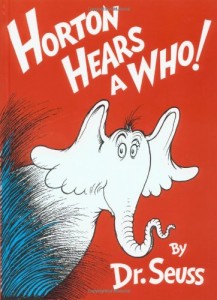
Horton Hears a Who!, by Dr. Seuss
Summary
First published in 1954 by Random House, Horton Hears a Who! tells the story of Horton the Elephant, a resident of the Jungle of Nool, and his quest to help the Whos. After hearing a small yelp coming seemingly out of thin air, Horton discovers the microscopic civilization of Whoville living on a speck of dust. Deciding that every life has value regardless of size, he places the speck on a clover and sets out to find a safe location to keep the Whos out of harm’s way. Unfortunately, being the only one with ears keen enough to hear these tiny people, the elephant has trouble convincing the other jungle residents that Whoville exists, and when they decide to put an end to his crazy antics by destroying the clover, Horton must struggle to save his new friends and teach the people of the Jungle of Nool an important lesson: “a person’s a person, no matter how small”.
Review
Horton the Elephant is one of my favorite Dr. Seuss characters, mostly for his kindness and integrity. He stays true to his word no matter what; as seen in the previous story featuring his character – Horton Hatches the Egg – when Horton makes a promise, he has every intention of seeing it through, and that makes him one of the best role models in Seuss’s stories.
I meant what I said
And I said what I meant.
An elephant’s faithful,
One hundred per cent!
– Horton the Elephant, Horton Hatches the Egg (Dr. Seuss, 1954)
Like many of Dr. Seuss’s books, Horton Hears a Who! is more than just a children’s story. It also teaches good lessons, such as the importance of open-mindedness and understanding the issues of isolationism. Horton’s biggest challenge is convincing his peers that something they can’t perceive or fathom actually exists – which, when you think about it, is a story that’s only too familiar in real life. But what’s really interesting about this book is the history behind its lessons. Once strongly opposed to Japan, the author changed his opinions after World War II, and used this book as an analogy for the American post-war occupation, even dedicating the book to a Japanese friend. Overall, the metaphor of two worlds overlapping creates a beautiful message, one that children can certainly understand and appreciate.
Horton Hears a Who! is one of Seuss’s most notable works. From the children’s book to the TV special to the 2008 full-length feature film (which I thoroughly enjoyed; I swear the “We are here!” scene gives me chills every time I watch it), this story is wonderfully imaginative and fun for readers and viewers of all ages. Though they may have been written for a young audience, no one is too old to enjoy the stories of the great Dr. Seuss!
Inspiration
What I always found inspiring about this book was the main character’s determination to help an entire community that he couldn’t even see. I admired Horton’s devotion to his cause, and the respect he had for all forms of life made him a truly lovable hero. With colorful characters, adventure and a heartwarming message, Horton Hears a Who! is one of my favorite Dr. Seuss stories, and one I’ll definitely enjoy for the rest of my life.
















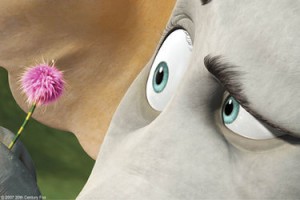

Recent Comments